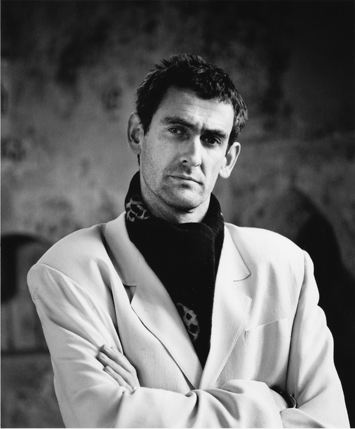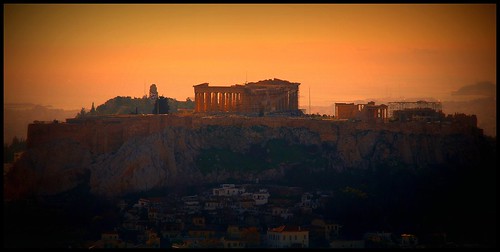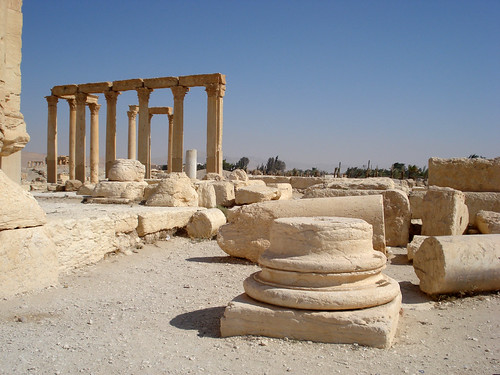Question – who can completely fill up a cavernous 1,500 seat domed hall on a Saturday night in Toronto? Answer – Dr. Zahi Hawass “I don’t get to introduce rock stars,” said Art Gallery of Ontario CEO Matthew Teitelbaum. Well tonight he did. Forget the critical New Yorker article, the mixed reviews of the new Tut exhibition at the Art Gallery of Ontario, or the fact that local Toronto media largely stayed away from this lecture. The world’s most well-known Egyptologist completely filled Convocation Hall, with people who had all paid a small admission fee (no more than $18) to…
-
-
Jon Cannon Expert and writer on British heritage Jon Cannon writes about old places in general and teaches medieval architectural history in particular. He teaches at the University of Bristol and frequently gives talks and leads tours on the subject. He has also published several articles on Avebury, and contributes a regular profile of a historic area – from ancient prehistory to 20th century heritage – to British Archaeology magazine. He has worked in the heritage industry for nearly 15 years, including working for the Royal Commission on the Historical Monuments of England, and English Heritage. He went freelance in…
-
For thousands of years, scientists from around the world have tried to understand how the Egyptians designed and built the Great Pyramid of Giza – the last remaining of the seven wonders of the ancient world. Now, an architect and researcher at the Norwegian University of Science and Technology (NTNU) says he has the answer to this ancient puzzle. According to Ole Bryn, the Great Pyramid’s building grid was developed based on the prime number seven – and the core of Khufu’s 146.6 meters high monument is likely a step pyramid. Khufu’s Great Pyramid, located on the Giza Plateau, was…
-
Key Dates 2400 BC The chapel of the tomb of Akhouthotep dates from the Fifth Dynasty, around 2400 BC. It was re-assembled in the Louvre in 1903, by Georges Benedite who was curator in the Egyptian department. Key People Akhethotep was a high dignitary of the latter part of the Fifth Dynasty, succeeding three generations of his family in high office. This chapel from the mastaba (tomb) of Akhethotep was where priests and family of the deceased would have come to offer food and drink to his spirit, and recite texts that would assist him in the afterlife. It is…
-
Key Dates Athens has been inhabited continuously for over 7,000 years. It became ancient Greece’s leading city in the 5th century BC, and went on to enjoy a period of cultural richness beyond parallel, before experiencing mixed fortunes in the Byzantine, Crusader and Ottoman periods. It became the capital of an independent Greek state in 19th century. Athens Greece Key People Athens is named after the Greek goddess Athena, daughter of Zeus. It’s associated with almost every great name from classical Greece and beyond: philosphers such as Socrates, Aristotle and Plato, dramatists such as Aeschylus, Aristophanes, Euripides and Sophocles, statesmen…
-
Acclaimed heritage photographer Derry Brabbs is regarded as one of England’s finest published photographers within the spheres of heritage and landscape, with over 25 books to his credit. Known for his acclaimed collaborations with James Herriot and Alfred Wainwright, he has also written and illustrated several titles celebrating England’s rich architectural and cultural legacy, including English Country Churches, Abbeys & Monasteries, English Country Pubs, Landmark, and A Year in the Life of the Welsh Marches. He is also the author and photographer of Hadrian’s Wall, in which he charts the Roman frontier from west to east, from the Solway Firth…
-
Archaeologist and historian Ross Burns knows Syria better than most, having lived there (and in Lebanon) for many years. He is the author of The Monuments of Syria: A Guide and Damascus: A History. Ross, who is currently preparing a doctorate on the archaeology of the Roman provinces of the Eastern Empire, has lectured at a range of institutions in Australia. He also leads study tours to Syria and Jordan for British and Australian travel companies. He explains why narrowing Syria’s ancient treasures down to a top 10 proves such a challenge: It’s not difficult to guess which of the…
-
A new discovery made by Dr. Zahi Hawass and his team shows that an ancient pharaoh made serious efforts to save the Sphinx. At Giza his team found the remains of a mudbrick enclosure wall that would have surrounded the Sphinx, perhaps protecting it from sand blown by wind. Made of mudbrick, the first section runs to the east of the Sphinx for 86 meters north-south and is 75 cm tall. The second section is 46 meters long, 90 cm in size, and runs east-west along the perimeter of Khafre’s valley temple. The two sides converge in the southeast. Archaeologists are already aware…
-
Standing 30 metres high and 160 metres wide, Silbury Hill in England is one of the world’s largest man-made prehistoric mounds. It was constructed in the Neolithic, about 25 kilometres north from Stonehenge. Silbury Hill Construction It is estimatedtheconstruction of Silbury Hill involved half a million tonnes of material and around four million man-hours of work equivalent to about ten years for a crew of a hundred people working 7/7 for more than ten hours a day. New and more precise dating of materials found inside the hill nowsuggests the main construction happened in about 100 years, involving some three…
-
Acrobats from Burma, workers from Central or West Asia, and a mausoleum design inspired by work in the Middle East – the Mauseoleum of China’s First Emperor was a cosmopolitan place says Dr. Duan Qingbo, the man in charge of excavating it. The mausoleum was created about 2,200 year ago and served as a tomb for Qin Shi Huang – the first emperor of China. While the emperor’s tomb is largely unexcavated, archaeologists have found thousands of life-size terracotta figures nearby. It’s believed that this army was created to serve the emperor in the afterlife. Dr. Duan (Duan is his…







